Today, I’m going to tell you about a live training concealed carry course that I recently attended with my wife and father …
What makes this a good live training course to talk about is it fits the criteria that I laid out in my other article about training courses for the armed civilian.
1. It’s taught by someone who is more than qualified but also
2. The entire course is taught with the context in mind being that of a plain clothes civilian who is concealed carrying in their every day life.
That’s it.
There was no attempt to turn the class attendees into “Sheep dogs” or “Spec Ops Snake Eating Door Kickers” and there were no back flips out of flaming helicopters.
Just good info, good range work and practical exercises designed to help good people 1.) hopefully avoid bad people and if that doesn’t work then 2.) win fights against bad people if needed.
Why did I take ANOTHER basic pistol course?
In the last 10 months, I’ve taken around 157 hours of professional firearms training. To put that in perspective, the average bachelors degree takes about 120 hours and the average master’s degree is 30 hours — so I’ve earned the equivalent of a “Masters degree” in handgun fundamentals at this point.
Yet, I signed up for another basic pistol/concealed carry course and completed it this past weekend …
Why is that?
There are a few reasons:
1. With a background in martial arts, I understand that there is no such thing as “advanced techniques” — just the fundamentals applied with more skill.
2. I teach others through the various things I publish, so I’m also learning “how to teach” the fundamentals of pistol craft from every instructor I take a course from and finally …
3. This was a special occasion because I was taking the class with my wife and my father.
I wanted my father to get some good training and see the incredible advancements in combat training since the Vietnam era and my wife … well … let’s just say that it’s always better to “out source” professional training for your wife (no matter the field) to another expert.
FPF TRAINING: AFTER ACTION REPORT (AAR)
Concealed Carry: Foundation Skills – day 1
Concealed Carry: Street Encounter Skills – day 2
www.FPFTraining.com
Culpeper, VA
FPF Training in 90 Seconds Promo Trailer:
This was a weekend training experience that I attended with my father and my wife. My father retired from the ARMY in the Vietnam era and since then has had no formal firearms training. This was also my wife’s first formal firearms training.
Why I Trusted John Murphy at FPF Training To Train My Wife and Father
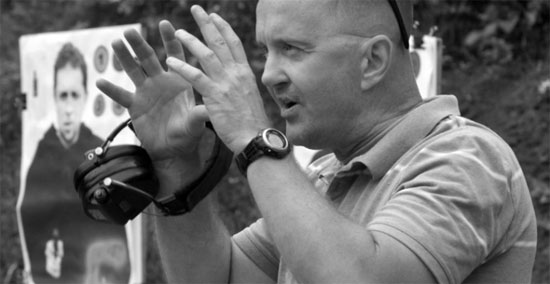
As you can imagine, having taken a lot of training in the last year from many different instructors, I wanted to make sure that my wife and my father’s first training experience was with the absolute best instructor possible.
Now, here’s the funny part — I had never trained with John Murphy before!
… But, I did train at his range. He hosted both the first Tom Givens pistol/shotgun course and the Greg Ellifritz Extreme Close Quarters Gunfighting and Tactical Medicine Class I took at his range.
As such, I got to see him talk a little bit and get a feel for the guy. Plus, you can tell a lot about people by the way they act and the people they hang around with.
For instance, in introducing Tom Givens, Murphy explained (I’m paraphrasing from memory of course): “The reason I host Tom at my range here is because Tom is the best at what we do. The context we all operate in, the concealed carry context, so that’s why he’s here”.
You notice that he didn’t say “I’m the best and Tom Givens is the second best” he went ahead and swallowed his EGO on his own range and gave praise where praise was due, to another trainer, and told us all to pay attention.
The ability to swallow one’s own ego and be a perpetual student usually makes for a good instructor (ask me how I know having spent my entire life involved in the martial arts).
Finally, through reading other AAR’s on the internet, I’ve heard good things about FPF Training and John Murphy.
Instructors, Range and Class Size:
John Murphy was the head instructor. As a quick background, John did a decade in the Marines and still works as a jackbooted government thug … err … in some capacity with the DOD as he reveals on his website. However, he points out “I’ve learned much more about shooting and self-defense outside the military than I ever did during my service.”
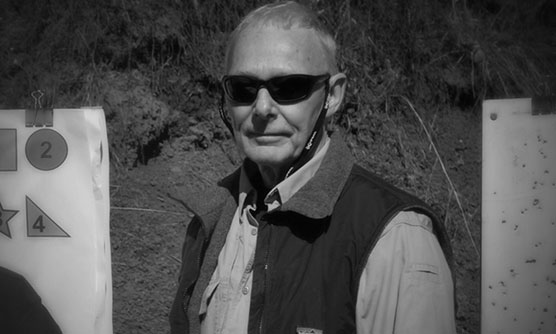
Gary Jakl was the assistant instructor. His experience is also deep and wide.
The FPF Training range is a really nice facility. It’s private and located rather remotely, on private land, even though it’s in Culpeper, VA. It’s not huge but there’s just enough space and equipment to get everything done. Not pictured are the porta potties because the range is rather remote.

Class size was about 6-8 people on both days. Just one assistant instructor was plenty and John controlled the lines well and could have probably run the entire class himself, but it was nice having the assistant instructor there because he had time/ability to give extra help when needed. The range could fit double this size no problem (and triple this size using the A/B line format).
As a note before we start. John offers the foundational skills class as a one day class and also the street encounter skills as a one day class. They could both stand on their own (and we had some people that came for either/or because of scheduling conflicts) but they are best taken together in my opinion because the information builds on each other and it’s good to do the day 2 while the day 1 info is fresh.
Concealed Carry: Foundational Skills (Day 1)

Let me first read you the description for this class from the FPF Website:
“This ten hour class is intended for near novice and experienced shooters alike seeking to acquire the basic skills required for carrying and employing a concealed handgun in self-defense.
“The class consists of an extensive read ahead email, multi-media classroom presentation and subsequent defensive marksmanship training drills. These defensive marksmanship training drills emphasize safety, pistol manipulation (load, unload, reload, reduce malfunctions, perform a concealed draw stroke), practical marksmanship and the legal considerations of employing deadly force. Students must have completed a basic handgun course, military service or some other form of pistol training. Please email with any questions.
“This class exceeds the training requirement for a Virginia Concealed Pistol Permit.”
And that is a pretty good description of what this class was about.
In short, this is clearly your foundational skills course. John covered all the safety rules, went into a good class lecture on concealed carry in general and then talked about the goals of the course.
He made the point that getting in the proper mindset is crucial. The reason that concealed carriers are often successful in defending themselves and their loved ones is simple–they refuse to be victims. Other parts of mindset were discussed and explained …
Essentially, in a one day class (or even 2 day) the point was made that there is not enough time to train/prepare/practice any and every situation you could encounter …
Rather the goal of a foundational class like this is to give you the principles of how to be effective with your concealed carry handgun and then you can always apply those principles no matter the situation you find yourself in. John emphasized this point that the fundamentals worked in various real life scenarios by showing surveillance video footage in his powerpoint.
I believe at this point John also explained all the “practical” points about concealed carry that aren’t covered enough in my opinion in other courses aimed at the concealed carrier (again, context).
He went over how to choose a good holster, even showing a box of examples of holster types and the guns they fit, the draw backs they presented, etc.
Then John showed his EDC (Every Day Carry) which, if I’m remembering correctly at this time consisted of an appendix carried Glock 19, with one reload on the weak side, a stabbing fixed blade knife (forget the name) carried weak side appendix, pepper spray in his left front pocket, and a flashlight somewhere in his pockets I forget where. John explained the usefulness of each piece of equipment and why he carried it and the type of situation that it might be best for.
John also made a point to teach everyone that handguns are wimpy. This is great and knowledge you just don’t see in most courses but that all cutting edge trainers know and teach today. In short, all handgun service calibers (9mm, .40 and, yes, even the .45 ACP) are all wimpy and you need to shoot more than once to get the job done most times.
Then after a few hours (it may not have even been that long as we had a small class and not many questions) — John handed out “snap caps” and we hit the range.
I like that this class started with dry fire manipulations of the handgun so that everyone was on the same page. This is where John explained all the fundamentals of marksmanship and how the applied to the concealed carrier (hint: it’s not bullseye shooting).
Then live fire started. We first started with shooting singles, doubles and other accuracy bullseye type drills to try to get down the marksmanship fundamentals.
After this, the concealed draw stroke was demonstrated and practiced to one shot. John actually teaches the concealed draw stroke from 4 different “starting positions” … I have thoughts on that, that I’ll share later, but it was definitely different and gave everyone practice at starting the draw stroke from hand positions that they might not have thought about before. The video below shows John demonstrating the 4 positions:
Then draw to two aimed shots (aimed pairs). And then later on “strings of 3-5 shots” with John emphasizing again that handguns are wimpy so you’ll need to shoot more than once in a real life encounter.
Around this time was lunch on the range. If you attend a course at John’s range he’ll tell you to bring your lunch because there’s not enough time to leave the range (he’s right).
After lunch, I believe John showed reloading techniques and malfunction clearances. Then there was more shooting.
Verbalizing, a Key Skill …
One thing that was great about this class was John had everyone verbalize, something I’m still not good at training enough. For instance, after shooting the bad guy everyone had to come to ready, scan for additional threats and then verbalize some version of “Somebody call the police! This guy just tryed to kill me!” while scanning for more threats.
This is really, really great work that should be done by anyone who is practicing for Concealed Carry.
We ended the day with a qualification course of fire on the FPFTraining Targets — everyone passed as far as I know — and there was REAL improvement in the targets of my father and wife by the end of the day.
All in all, the FPF Training Concealed Carry: Foundational Skills course is exactly what it sounds like a “foundational skills” course much like most other “Handgun 1” classes that I’ve taken.
What did set it apart though was that John teaches the entire thing in the context of the civilian concealed carrier, which I think is lacking in most “defensive pistol” or “Handgun 1” or “Combat Pistol 1” courses. Round count for day 1 was approximately 200 rounds.
Concealed Carry: Street Encounter Skills (Day 2)
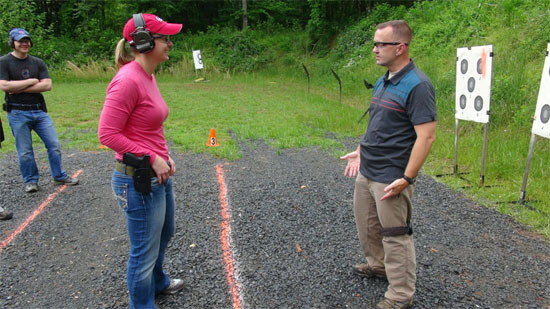
I believe this is John’s “flagship” class and for good reason. This was an EXCELLENT class for a basic concealed carry class. Here’s the description from John’s website:
“During this ten hour course, students will concentrate on practical application exercises transitioning their foundation skills into a realistic context and live fire environment. The principles of de-escalation, verbalization and decisive movement will be exercised along with practice in the judicious use of lethal force.
“This course also includes a 4 hour interactive, multi-media lecture illustrating the indicators of criminal pre-assault behavior, the physiological impact of stress in self-defense situations and ballistic performance. The course culminates with highly supervised “force on force” scenarios to reinforce and exercise the defensive principles of awareness, avoidance, deterrence, de-escalation and transition to decisive action.
“This class exceeds the training requirement for a Virginia Concealed Pistol Permit.”
My wife, my father and I were 3 of the people from day one that stayed for day 2. Then either 3 or 4 people joined us for the day 2 and I THINK that almost all of them had prior experience training with John. That meant that everyone was on the same page because they had the basics from day one down.
The Extensive Classroom Time …
Even so, the day started with 3-4 hours of classroom time with an extensive powerpoint presentation that really knocked everyone’s socks off. I’m not joking. It was really good.
Let’s face it, the idea of sitting on your butt for more than an hour is not appealing, but John’s presentation was really good. John said it covered “illustrating the indicators of criminal pre-assault behavior, the physiological impact of stress in self-defense situations and ballistic performance” which it did and much much more.
Discussions of “social” vs “asocial” violence were discussed which I thought was really great because it was one of the main takeaways I had from the Target Focus Training (TFT) I had done with Tim Larkin and what I like about what they teach.
There were many, many, MANY “caught on camera” video surveillance clips played for the class to show what actual incidents actually look like and the lessons that could be learned from each.
In fact, there were two incidents (at least) over the two days that were so ambiguous that they presented the best case ever of why I would ever carry pepper spray. I won’t go into the incidents, but the point is I never saw a need that I personally would need pepper spray but after seeing and discussing two “what would you do” incidents — I see now where pepper spray could be VERY valuable in some ambiguous situatoins that are on the fring of social/asocial but my hands, a knife, or a gun aren’t the “best” answers. Very good stuff.
Come to think of it, almost everything in John’s presentation — if used as the starting point for your own reading/research — would set you up really well to become very skilled in all this. John basically draws from a vast library of knowledge — from Colonel Coopers “Principles of Self Defense” to modern day sources.
One take away, that I think my wife finally understands now, is how quickly the “monkey dance” of social interactions where egos are involved can turn into social violence, and then asocial violence … and you never know who or when in the real world.
Managing Unknown Contacts and More “Transitional Moment” Work …
Then we went to the range and there we did some work on MUC – Managing Unknown Conctacts – that John explained he picked up from Craig Douglas (aka SouthNarc).
This is where you get into the “principles of de-escalation, verbalization and decisive movement” that John promises you. In short, how to do you recognize, then avoid or stay out of a bad situation.
How can you tell if the guy walking up to you on the street is just an out of work guy who needs a couple bucks or a guy that’s using that ruse to get close enough to jam a knife between your ribs?
Do you know? Have you put as much time into thinking about pre-assualt indicators as you have into what gun is the coolest?
After practice of a lot of this, and giving I believe it was three basic solutions to managing unknown contacts and people that start to present themselves as possible problems (with practice) we had lunch.
After lunch I believe is when the live firing began. Safety was quickly covered again, and because everyone was on the same page the shooting started.
The FPF Target …
Various drills were done, almost all shooting on the FPF Training Target which you can see below:

As you can see, this is a good target that (I assume) John designed since it bears his company name. For the head shots, you’re looking to get hits in the ocular cavity (which is actually shorter in height than a 3×5 card, this looks to be 2×4-5 inches). And instead of aiming “center mass” you’re aiming for the inner most triangle which starts at the sternal notch and the two nipples — this is where the heart and other large vessels that are anatomically valuable to destroy with your wimpy pistol bullets.
In addition, the “lines” for these target areas are light grey on a black hoodie that the bad guy is wearing so they’re not easy to see … sort of like in real life the bad guy doesn’t have any target zones drawn on him right?
Plus, you’re looking into the face of a “real person” and shooting them, so that’s also good for realistic training (an entire discussion that deserves its own article). And finally, the numbered shapes in different colors can be used (and were) used for different marksmanship drills. It’s almost like John put a lot of thought into this target 🙂
Gas Stations and other “Watering Holes” …
In the classroom portion, it was shown how a lot of incidents happen at Gas Stations and they present a special problem for you because 2 legged predators — much like the predators of the Sahara — see gas stations as “watering holes” where they know that you have to go and you’re often distracted enough to attack. The video below shows John explaining some gas station concerns:
In addition to practicing drawing from concealment with single, double and multiple hits to the target at 3 yards, 5 yards and 7 yards, eventually movement was introduced.
Movement plus shooting — all in a beginner’s course!
Much like Tom Givens, John recommends that you sidestep on the draw anytime you’re drawing on a threat inside of about 5 yards. Also like Tom Givens, this is included in a beginner’s curriculum, which I totally agree with.
This is great training and I was amazed that my wife with no formal training was progressing so fast that half way through day 2 in her first training class she was sidestepping (or hopping …) and drawing a gun and putting multiple hits center mass on a bad guy like a pro. It was great to watch. John demonstrates the defensive draw in the video below:
Then there was one handed shooting and practiced. I can’t for the life of me remember if we did “other killing hand” shooting (weak hand/support hand shooting). I think we did.
Verbal and Physical Interactions Before The Guns Come Out …
Building on the verbalization skills from day one, and the Managing unknown contacts from day 2, John acted as the bad guy’s “voice” for many of the drills.
So you’re standing there and John is yelling “hey man, let me get some change man, let me get some change …” and you verbalize back, “sorry, I don’t have any, no thanks …” and then John says “HE DON’T LOOK RIGHT” which is your queue to put your hands up in position 4 (hands up in the “give me space I don’t want trouble” position where you can also defend your head against blows) then either the situation de-escalates (“OK, he walks away, God Bless you man ...”) or you enter what John calls “the transitional moment” when John starts shouting “He has a gun, GUN, GUUUUNN!!!” then you sidestep, draw and shoot.
This is really, really, REALLY good training for anyone that carries a gun.
All contacts with weird, creepy people will NOT end up in you having to shoot them (in fact probably 99% of the time they won’t if your head is not up your butt) — so practicing these transitional moments — with verbalization is sorely lacking in most defensive handgun training I’ve taken.
Shot Timers and Steel (something most people don’t get to experience) …
More range work was done, on the shot timer and we all got to see our times. Right now, I’m sitting at around 1.40’ish seconds (consistently) on the sidestep with draw from concealment to first aimed shot (guaranteeing my hits in the anatomical valuable zone), with .20-.30 splits on the followup shots. It was neat to see that measured in a class (I can’t remember the last class that the instructor got a shot timer out).
My wife and father, by the way–even with this being their first formal training–were consistently in the 2.3 to 2.5 range of side step draw from concealment and getting an anatomically valuable first hit. With only 2 days of training! Obviously, if most gun fights happen in less than 3 seconds–John did a great job getting them prepared!
We got to shoot some steel too. At some point, we did a walk back drill on C-Zone steel targets. Three targets, and you had to get 2 out of 3 hits to continue moving away from the targets. We started at 10 yards, most the class was done by 15-25yds. I think I made it (if I had to guess because there was no markings past 10 yards) to about 40-50yds before I missed two of the targets. A few others made it farther than me.
The final student remaining (along with John Murphy of course) were battling it out at around 70yds if I remember what John said correctly. Needless to say at the 40-50yd distance I got my two misses at — my trijicon HD front sights were obscuring the entire target. I want to do more work at these extended ranges because it gives you an advantage for sure!
John explained that while the “typical” gunfight happens at 3-5 yards in 3 seconds or so — you should know how far and whether you can make hits like this at distance. Great points and I agree, especially with the idea that we are seeing more domestic terrorism and killers with rifles that you may have to engage at distance.
We did some “competitions” against each other on the steel dueling trees as well at 10 yards. That was a lot of fun as well.
At the end of both days, we got to end with six shots of “Whatever makes you happy” on the targets. Basically, you got to shoot six shots into the target however you wanted. And then the class was basically over. Round count for day 2 was approximately 200 rounds as well.
In truth, I didn’t keep copious notes because I was participating in the class and concerned about managing and trying to make sure my wife and father had a good first class experience too — so I might have missed a LOT of what was covered — but that should tell you that it was an excellent class because it covered A LOT.
In the video below, you’ll get a lot more footage (8 minutes) of the type of training that was in this class:
In Conclusion …
John Murphy at www.fpftraining.com is a class act. He represents exactly what I am talking about when I emphasize what is important in a concealed carry course — there are so many things you can learn that could waste your time — and there are so many things that you should learn — John’s training represents a great example of a “foundation” that will probably be enough for the average citizen.
And at the very least, it’s a GREAT foundation to start building on your skills. But I would recommend the course highly to anyone and everyone who asks, no matter your skill level.
Further, I’m glad that I put my faith in John and trusted him enough to train my family … and that he didn’t disappoint. He doesn’t know it, but he had very lofty goals that I had set for him and he exceeded them all. If you’re looking for a good foundation course, go to Culpeper, VA, and take a class from John you won’t regret it.

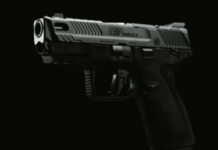


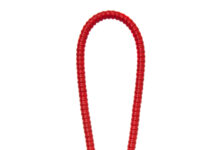
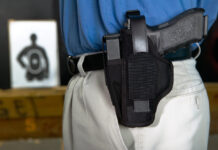
![Are Compensators Worth It? [Video]](https://preparedgunowners.com/wp-content/uploads/2025/07/Depositphotos_815431992_S-218x150.jpg)


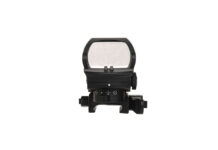
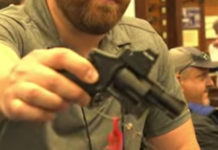
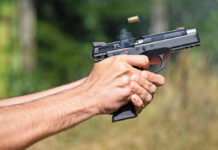
![Would-Be Robber Takes The Tueller Drill Challenge [Video]](https://preparedgunowners.com/wp-content/uploads/2025/10/Depositphotos_50626839_S-218x150.jpg)

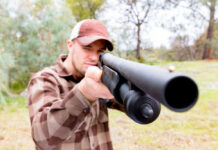
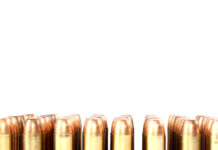
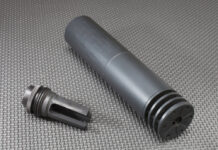
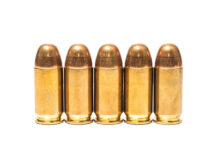

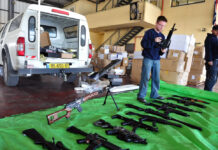




![Do You Make This HUGE Mistake In Your Firearms Practice? [Video]](https://preparedgunowners.com/wp-content/uploads/2024/08/Depositphotos_16773085_S-100x70.jpg)





![Are Compensators Worth It? [Video]](https://preparedgunowners.com/wp-content/uploads/2025/07/Depositphotos_815431992_S-100x70.jpg)
![Optic Ready vs Milled slides? [Video]](https://preparedgunowners.com/wp-content/uploads/2024/02/image-3-100x70.png)
![[Checklist] What Gear You Need To Take Pistol, Rifle & Shotgun Training Courses [Video]](https://preparedgunowners.com/wp-content/uploads/2023/07/Depositphotos_275087632_L-100x70.jpg)
![What is in Carter’s 2023 EDC? [Video]](https://preparedgunowners.com/wp-content/uploads/2023/07/Depositphotos_146856137_L-100x70.jpg)
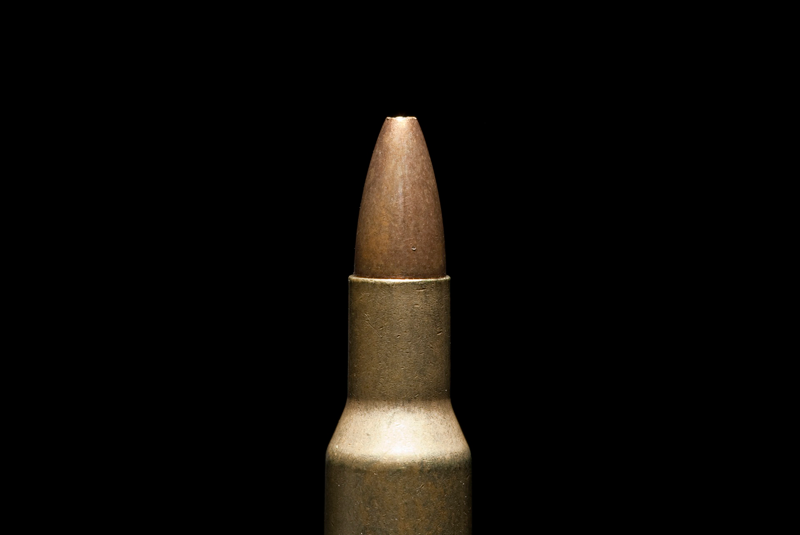
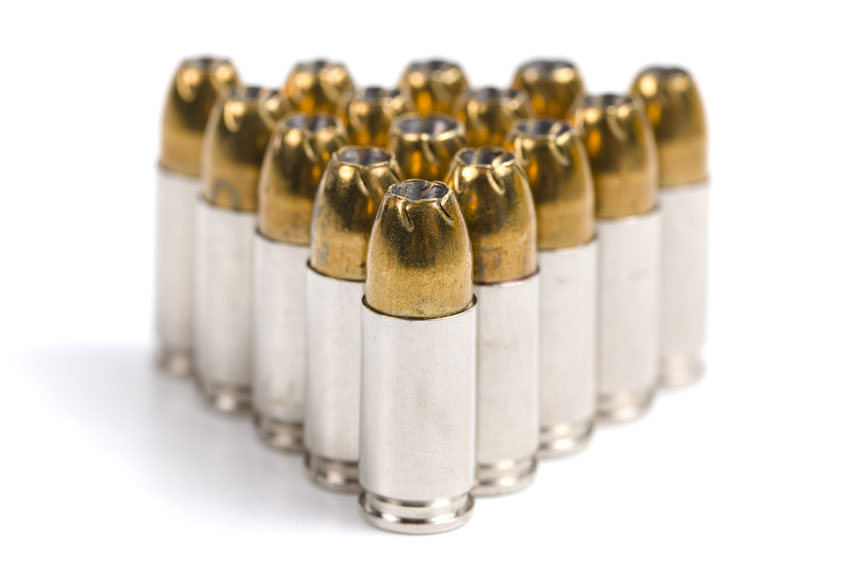
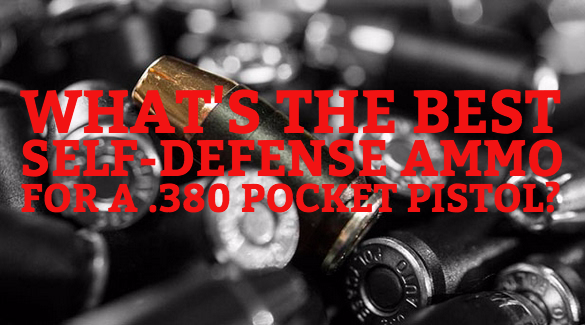
THIS LOOKS LIKE A VERY GOOD CLASS. I DON’T NEED A GUN 99.9% OF THE TIME. IT’S THAT .01% THAT I WORRY ABOUT ! AS YOU SAID EVEN WHEN YOU HAVE TO PULL YOUR GUN, 99% OF THE TIME YOU DO NOT NEED TO FIRE.
I HAVE ONLY HAD TO PULL MY GUN, ONE TIME, NOT FIRING A SHOT, BUT IT SAVED MY ASS !
Good to hear Ron!
Yup, 99% of the time you don’t need a gun … then it seams 9 out of 10 times just pulling the gun is enough … it’s that other small percentage we train for because after all, it’s not the odds it’s what’s at stake!
I would still like to see more courses offered for those of us who are older and/or have disability’s. I walk stiffly and slowly with a cane. Side stepping or backing up are difficult at best. There are times when I can hardly talk let alone shout out an order, especially true if I have just walked more than 30 or 40 yards. Also due to my girth I find it impossible to reach around with my support hand to lift my cover garment (holding that blasted cane in the support hand doesn’t help either). Have practiced and do fairly well one handed but know my time to draw is slowed, as is my ability to rapid fire. Still I prefer to carry and try my best to defend my self and my loved ones.
There are also times , mostly when in the larger “box” stores, when I must make use of those electric scooters they have by the door. So some training on how to draw and fire from a seated position would also be helpful.
Those are some great points Ron … and I know you don’t want me “preaching” at you … but think of how many of those issues could disappear (or would be lessened dramatically) if you lost some weight?
6 months of dedicated effort could pay off for a lifetime for you in 1,000 of ways not related to just self defense.
EDIT TO ADD: My father is 61 and caught his support hand in a table saw a few years ago, so he has disabilities too (plus his eyesight is really bad now to where he can’t see the front sight without glasses). He also may be in early stage parkinsons (his hands shake badly). But he does workout consistently and does as much as he can, and he did the course as I said.
Caleb..I took the Street Encounters Course with you all on the 9th and I am still talking about it to this day. I went into the day feeling nervous and unsure about what I was doing since this is my first year shooting but I can’t tell you how much John and taking the class with you all really made it an awesome learning experience. I left wishing that John offered so many more typpes of classes because I enjoyed and learned so much that day. This is a great write up you did and I hope to have the opportunity to train with all of you again.
Hey Mac!
Great to see you here 🙂
Yeah it was great for sure — John will have to keep in touch to let us know what other training he offers.
Best,
Caleb
P.S. For your first year of shooting you did great! I think you even beat me on the walk back drill right? You made it far if I remember and you were shooting with Trijicon HD’s too on your Glock right?
Mac! Stand by! 😉
Ron Wellner is telling it like it is for many of us who are older and/or disabled. Yes Caleb, of course you are right and most of us would be happy if we could lose weight. However, even though it would be nice, it is not in the cards for a lot of us.
I echo what Ron said. Instead of lecturing us to lose weight (do you really think we don’t know that already?) it would be good if there could be some instruction taking into account our physical condition as it is, helping
us to make the best use of what we have.
Believe me, if we could reasonably lose weight we would. But for some of us that’s just about as likely as becoming young and fit once again.
So, take us as we are and work with us to do the best we can considering what we have to work with. THAT will be most gratefully appreciated!
With kind regards,
John
Excellent write up!
One minor point: a Bachelor’s typically requires about 120 CREDIT hours, a credit hour being equivalent to one hour per week of instruction for the entire duration of semester term. Put another way it takes most folks 4 years of full time work equivalent to earn a BS. 157 hours would be 4 weeks full time work.
First off, nope, never been to college.
Second, it was just meant to be a frame of reference …
With firearms instructor there is no frame of reference for these things. There’s simply certifications. I’m NRA certified in two disciplines, and have two other instructor certifications from different schools combined with all the other courses I’ve taken in just the past 10 months alone — with that 170+ hours so far …
Honestly buddy, there’s no way to measure this stuff like a college “credit hour” — which as I understand it — is becoming a less rigid definition as well because of the proliferation of online universities and degrees. Further, you can “Test out” of most of those hours if you’re smart (by simply passing the CLEP exams first before ever stepping into a classroom) — and can get many degrees now just by skipping the hours in class and passing the tests:
See http://www.wsj.com/articles/SB10001424127887323301104578255992379228564 and for more on how to get a bachelors in one year here http://www.brazencareerist.com/blog/2012/06/19/test-out-of-college-graduate-in-1-year-with-degree-by-examination/
In that respect, I tested out as a firearms instructor as well. I passed the FBI qualification course with a 98.3% score (FBI firearm instructors are required to achieve a 90% score or better) and then the Rangemaster firearms instructor course that is based on the FBI qual, but much much harder (smaller target zones) with a 99.2% — obviously you can tell by the high scores I missed one shot on both tests lol.
Finally, as another frame of reference, 40 hours is about the same number of firearm training hours as most law enforcement personnel will receive during their academy days. I have double that in instructor level courses alone …
So yeah — thanks for clarifying the whole college credit thing for me because I honestly never did the college deal — and I had no idea (and it still doesn’t make sense to me lol) but it was meant as a frame of reference — I saw it used as a comparison here by a colleague and thought it was an excellent example.
Minor point, but a real Bachelors degree takes much longer than 120 hours to complete. And a Masters takes a hell of a lot more than 30 hours. That said, I aplaud the author’s commitment to training. 157 training hours is impressive!
First off, nope, never been to college.
Second, it was just meant to be a frame of reference …
With firearms instructor there is no frame of reference for these things. There’s simply certifications. I’m NRA certified in two disciplines, and have two other instructor certifications from different schools combined with all the other courses I’ve taken in just the past 10 months alone — with that 170+ hours so far …
Honestly buddy, there’s no way to measure this stuff like a college “credit hour” — which as I understand it — is becoming a less rigid definition as well because of the proliferation of online universities and degrees. Further, you can “Test out” of most of those hours if you’re smart (by simply passing the CLEP exams first before ever stepping into a classroom) — and can get many degrees now just by skipping the hours in class and passing the tests:
See http://www.wsj.com/articles/SB10001424127887323301104578255992379228564 and for more on how to get a bachelors in one year here http://www.brazencareerist.com/blog/2012/06/19/test-out-of-college-graduate-in-1-year-with-degree-by-examination/
In that respect, I tested out as a firearms instructor as well. I passed the FBI qualification course with a 98.3% score (FBI firearm instructors are required to achieve a 90% score or better) and then the Rangemaster firearms instructor course that is based on the FBI qual, but much much harder (smaller target zones) with a 99.2% — obviously you can tell by the high scores I missed one shot on both tests lol.
Finally, as another frame of reference, 40 hours is about the same number of firearm training hours as most law enforcement personnel will receive during their academy days. I have double that in instructor level courses alone …
So yeah — thanks for clarifying the whole college credit thing for me because I honestly never did the college deal — and I had no idea (and it still doesn’t make sense to me lol) but it was meant as a frame of reference — I saw it used as a comparison here by a colleague and thought it was an excellent example.
Honestly I stopped reading as soon as I saw that the author has no idea about the concept of credit hours. Do you really believe a BA can be obtained in only 120 clock hours? Three weeks of full time study? Seriously?
LOL, I like how you stopped reading yet made it far enough to comment. Bravo sir. You have qualified to be a commenter on the internet — because it seems many people comment without reading.
First off, nope, never been to college.
Second, it was just meant to be a frame of reference …
With firearms instructor there is no frame of reference for these things. There’s simply certifications. I’m NRA certified in two disciplines, and have two other instructor certifications from different schools combined with all the other courses I’ve taken in just the past 10 months alone — with that 170+ hours so far …
Honestly buddy, there’s no way to measure this stuff like a college “credit hour” — which as I understand it — is becoming a less rigid definition as well because of the proliferation of online universities and degrees. Further, you can “Test out” of most of those hours if you’re smart (by simply passing the CLEP exams first before ever stepping into a classroom) — and can get many degrees now just by skipping the hours in class and passing the tests:
See http://www.wsj.com/articles/SB10001424127887323301104578255992379228564 and for more on how to get a bachelors in one year here http://www.brazencareerist.com/blog/2012/06/19/test-out-of-college-graduate-in-1-year-with-degree-by-examination/
In that respect, I tested out as a firearms instructor as well. I passed the FBI qualification course with a 98.3% score (FBI firearm instructors are required to achieve a 90% score or better) and then the Rangemaster firearms instructor course that is based on the FBI qual, but much much harder (smaller target zones) with a 99.2% — obviously you can tell by the high scores I missed one shot on both tests lol.
Finally, as another frame of reference, 40 hours is about the same number of firearm training hours as most law enforcement personnel will receive during their academy days. I have double that in instructor level courses alone …
So yeah — thanks for clarifying the whole college credit thing for me because I honestly never did the college deal — and I had no idea (and it still doesn’t make sense to me lol) but it was meant as a frame of reference — I saw it used as a comparison here by a colleague and thought it was an excellent example.
Caleb, you’re REALLY AWESOME at cutting/pasting the same answer!
Well done, Sir!!
Thanks! It was the same complainy pants complaint so why not right?
🙂
[…] Want some more info on FPF? Here’s a review from PreparedGunOwners.com. […]
Comments are closed.